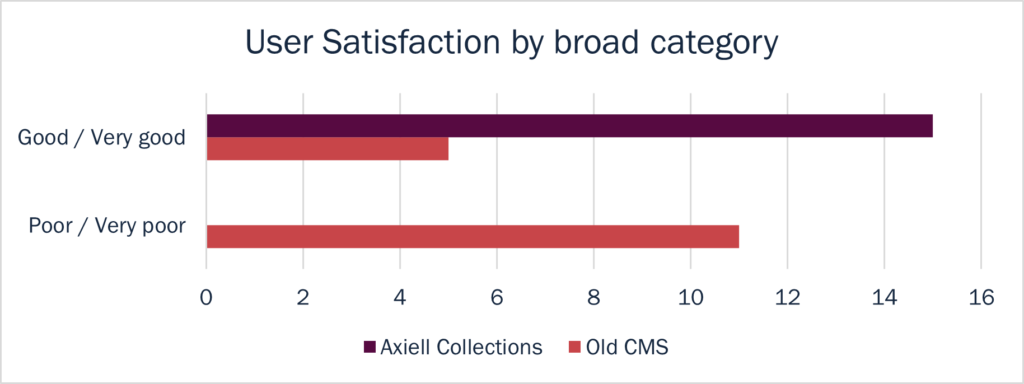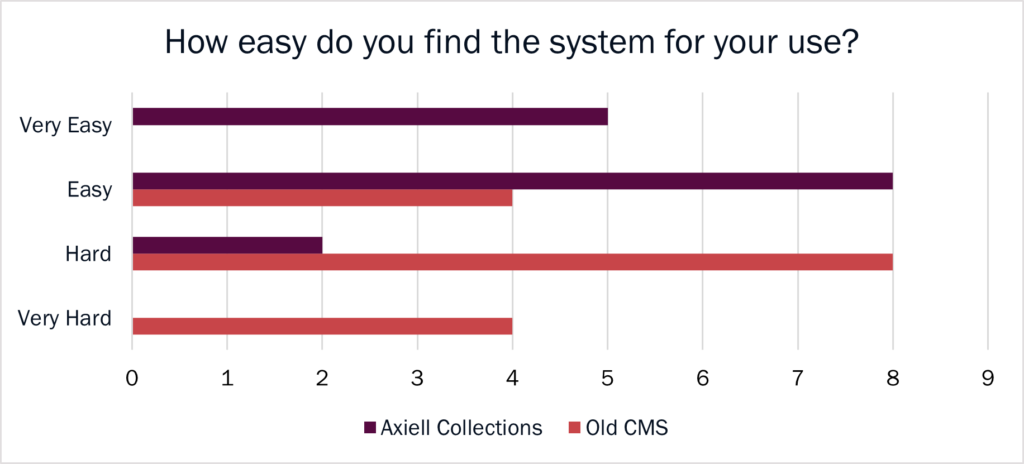Rory McDaid, Collection Information Officer at Colchester and Ipswich Museums discusses how implementing Axiell Collections has dramatically improved user satisfaction. Rory talks about their success getting institutional buy-in and the challenge of engaging users, all whilst moving to a new Collections Management System and launching their collections online.
Rory McDaid:
At Colchester and Ipswich Museums, we’re a little unusual as we span two towns and two different local authorities, which brings a range of challenges. We cover multiple collection types, across the arts and natural sciences, a designated Roman archaeology collection, through to more modern social history. In total, we’ve got about 220,000 object records, but our overall collection size is significantly larger because we’ve got quite a lot of bulk accessions, such as a single object record for hundreds or thousands of butterfly specimens.
Over the past three years, we’ve moved from our old CMS supplier, where we had pretty limited functionality and very little prospects do much more with our data, to Axiell Collections.
We launched Axiell Collections in October 2019 and implemented Axiell Internet Server in December 2020, which for us is quite a compact period of time, given we have a small team.
The importance of moving to a new Collections Management System
Before the move to Axiell Collections, we had data in 10 different databases. We didn’t have a loans or exhibitions database, just objects. Ipswich’s data was in one database and Colchester’s was across the other nine. If you wanted to search objects from one specific location, most of which had a mix of different collection types, you had to repeat that search over and over.
The move to Axiell Collections came about because we needed a reliable, externally-hosted solution and because most users weren’t that comfortable with the old system. As such engagement was fairly low.
Our data was in a pretty horrendous state. Access was massively restricted, so any data entry was limited to a handful of people. We had a culture of non-engagement with the CMS because it hadn’t really been a part of people’s jobs. And so, when people did get access, the data was pretty poor. And that further stifled engagement. On top of this, our previous system was only accessible via remote desktop setup. It made it incredibly slow, very unreliable and just a nightmare to use. In this way, our documentation suffered. A lot of work was also being done in Excel but none of it in a structured way.

Getting funding and institutional buy-in to move to a new Collections Management System
Making a case to move to a new system was a challenge. Since we had a very disengaged user base, it was an uphill battle arguing that we should be spending money on something to replace a system people weren’t using.
So, a big part of what myself and other colleagues focused on straightaway was trying to change the attitude towards the CMS and what it’s for. Even basic things like the kind of language we use, so always referring to the CMS as a business-critical system, and the fact that we are a museum, we should have an effective database to manage the collections that we are responsible for.
We managed to get the annual hosting support costs of a hypothetical new system into our Arts Council England (ACE) bid. We worked hard writing options papers and getting up-to-date quotes from suppliers so that, when pockets of money came up, we were able to argue that we had a fully costed plan for what we wanted to do.
The stages involved in moving to Axiell Collections
Before we started properly working with Axiell, we consolidated our 10 databases into three.
Joanna at Axiell was really our saviour because our data was terrible. After sending an export of each three datasets, Axiell returned a mapping document, indicating every unique field that was used in our old system, and the equivalent home in Axiell Collections it was destined for.
Each of the sets had around 1000 unique fields. The stuff that couldn’t be mapped slowed us down because we had to assess the value of that information and move it to an appropriate field.
There was lots of placeholder information, generic text applied to all records and things like that, which we deemed could be lost because they weren’t useful to us.
We did two test runs with this mapping until we were happy and therefore it wasn’t a test system anymore.

Publishing their collections online
It wasn’t long before we started looking towards Axiell Internet Server for publishing our collections online. One of our goals in moving to a new system was so we could have an online collections platform.
Like a lot of organisations, the pandemic really emphasised how little digital presence we had, especially for our collections. A few shots now and again on our organisation’s Instagram or Twitter were pretty much the extent of it. It was something that we’ve been arguing for, for a long time.
To launch our collections online, we focused on making sure that records of any objects that were on display were published, so that we could emphasise that, while the museums were closed, people could still access those collections.
Having a public facing component has helped us push for documentation work to happen. People seem far more worried about documentation when the collections are made public, as it exposes the problems to a wider audience.
On average we’re adding about 1000 new records a month but the hope is that we’ll be able to start setting targets and having a consistent flow of records being published regularly.

We can also see what our most viewed objects are, some of which has been surprising. The ‘Gosbeck’s’ intaglio is by far our most viewed object. It was the subject of some research and reinterpretation and was picked up by local news, which in turn drove people to the collections pages. It demonstrates the link between putting the effort in to publishing the collections and generating engagement and interest.
Improving user satisfaction with the collections management system
Whilst building the case for the new Collections Management System back in 2017, we surveyed staff on their use and satisfaction of the old system. We used a lot of those responses to build our options papers and reports to establish what our users wanted from a system.
Satisfaction was pretty poor and it showed that our old CMS wasn’t fit for purpose and that we could be doing a lot more.
Then in 2020, around a year after we had launched Axiell Collections to our users, I asked the same set of questions that I had in 2017. The good news is that, universally, users state their level of satisfaction is good or very good for Axiell Collections and generally people are very happy.

Perhaps the most important question was “Does the CMS meet your work needs?” And we had universal agreement on this. Which is an immense relief, as it means I haven’t wasted a lot of our organisation’s time and money getting us here.
Some user feedback on Axiell Collections included:
“I think it’s life-transforming! From being able to walk into a store with a laptop and update records, to being able to efficiently locate objects within the museum. It’s speed and browser-based system can’t be undersold. The fact that it is so user-friendly has changed my attitude towards improving the data it holds, as I now know I have agency over improving this, without efforts being wasted or even causing problems for other colleagues e.g. through incorrect use of terminology, use of free fields that compound issues of data management and clarity”
“Everything for the better! So much easier to quickly update a record and add in details. Greater flexibility.”
“It’s simplified every process of my work. It’s provided a home for information that would otherwise be lost somewhere between physical and digital. Other databases, like exhibitions and loans are a huge help. Controlled locations and the change location tool are revolutionary compared to how we worked before.”

This survey has been really helpful in understanding where our users are in terms of working with the system and we are using the responses to guide our internal support and training. We’ve written several internal training guides for regular day-to-day activities that our users undertake, guiding people with screenshots and basic steps.
Before the pandemic, we had been trialling ‘Axiell surgeries’ once a month as a way of keeping users informed of what work was happening to improve the data. Engagement for the sessions wasn’t as I’d liked but, following this survey, we will reinitiate those. Doing this via Teams or Zoom will make it a lot easier to get people together and we will make the sessions shorter and focused on a specific topic.
While we have tried to bring everyone along with the new system, it’s obviously been a huge change. The results of the survey tell me that I need to be doing more to support users, particularly those who aren’t reaching out themselves. Curated groups/Tiles on the website have been one way to get people engaging in documentation work with a specific output, although there’s a lot more that we need to do. And so I’m actively working on that.
A collections management system isn’t magic, it requires an engaged group of users to make the most of the software. Our data was bad and needed a lot of work. And no CMS was going to fix that. However, a modern, user-friendly CMS makes that work easier. That, in turn, will hopefully lead to improved record standards because we will have a higher level of engagement.
Header image: Colchester Castle and Castle Park @Colchester Museums
Find out more about Axiell Collections
Manage your museum and archive collections from wherever you are with Axiell’s flexible, intuitive and web-based collections management system. Axiell Collections is simple to use and can be accessed wherever you are, through a browser.




